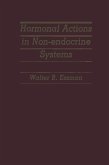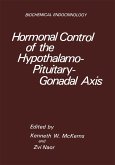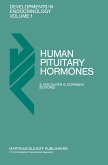The actions of honnones upon systems outside of the usual target sites for such molecules represents an area of increasing interest and growing clinical significance. This volume represents a cross-section of such actions of honnones upon several relevant sites. In the first chapter of this volume Dr. Malick discusses the current status of endorphins as analgesic agents. It is now known that a more primary level of control exists for iJ-endorphin in that a 41-amino acid pep tide has been isolated from ovine hypothalamus; this peptide stimulates iJ-endorphin release as well as the secretion of corticotropin (Vale et al. , 1981). The analgesic properties of corticotropin and its immunoactive-like analogs are well known. so it does not come as a surprise that these two classes of analgesic peptides are regulated by a common hypothalamic con trol peptide. It may also be of interest to observe that an increase in iJ-en dorphin concentration in the pituitary occurs in genetically obese mice and rats, and that such obesity can be attenuated through the administration of nalaxone (Margules et al. , 1978). It has also been determined that genet ically obese mice have a probable cholecystokinin deficiency in the cerebral cortex in that this peptide is a satiety-inducing agent (Saito, et al. , 1981). The analgesic properties of the latter have also been observed. The extra-pituitary actions of another pituitary peptide, as examined in the second chapter of this volume by Dr.








